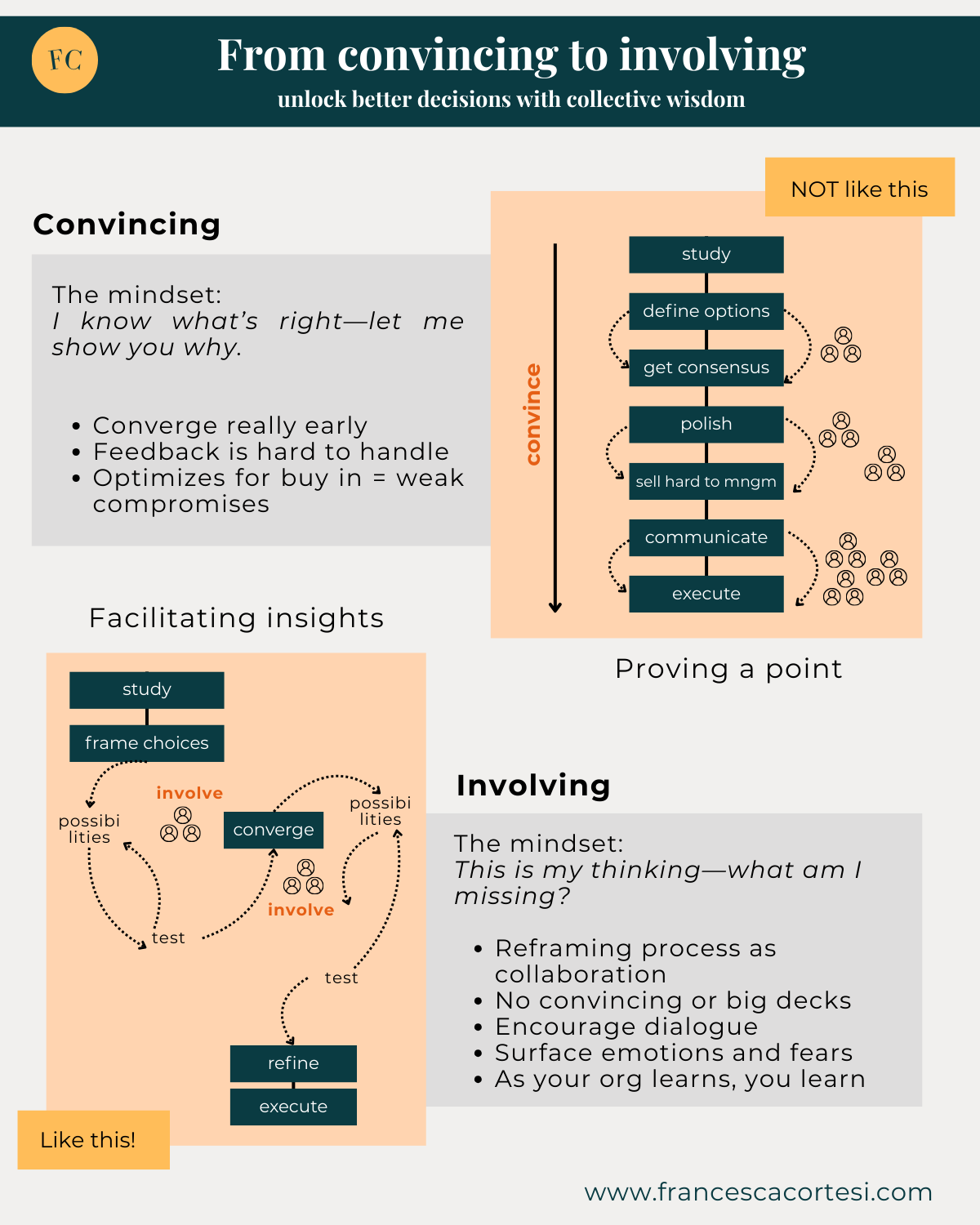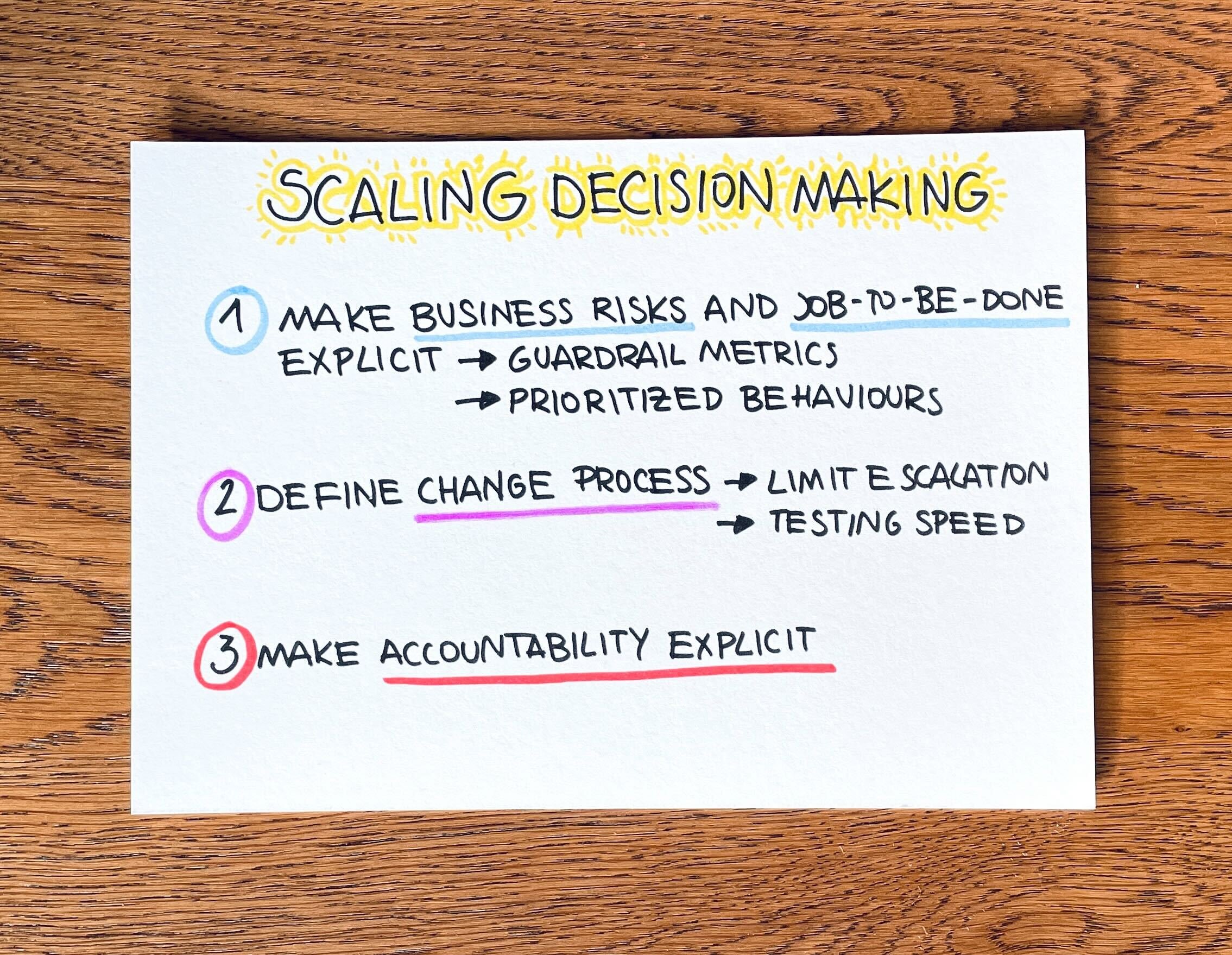From convincing to collaborating: a better way to make product decisions
If you think the best way to make decisions is by convincing others you’re on the right path, I encourage you to think again. Because when we focus only on convincing, we miss out on the organizational wisdom that could actually make us (and our products) better.
I used to think my role was about doing the homework, refining the view, and then doubling down on getting everyone to see what I saw. I’d:
Look at the data
Talk to users
Involve some experts as a validation step
Converge on a direction
And then present it as the best way forward
Sure, I got feedback, but every comment felt harsh because my work was “on the line”. People hesitated to challenge a “perfect plan” and as consequence I only got weak signals and insights.
I wasn’t learning. My product wasn’t having the impact that it should have has as our “consensus-driven” launch didn’t move the needle.
That’s when I started to rethink things.
I experimented, talked to people, read books, and slowly tweaked my approach. Now, collaboration is baked into my process from the start.
It’s no longer about convincing. It’s about encouraging dialogue. And it starts with a few simple (but not easy) shifts:
Frame choices early.
shifting from “Here’s the plan” → to “Here’s my thinking—what am I missing?” to invite to a dialogueNo big decks or data showers.
More questions, more listening. And more emphasis on emotions, insights, and fearsDo your homework, but stay open.
Earn respect, by showing that you know your space, but enter the process with the mindset of learning, not convincing
These are small shifts, but they’ve made a huge difference for me.
Especially reframing my role, from truth-teller to orchestrator, intentionally seeking insight and roadblocks.
It changed how I approach strategy, refinement, innovation. And no matter the context, it’s never failed to deliver.
A snapshot of my process



